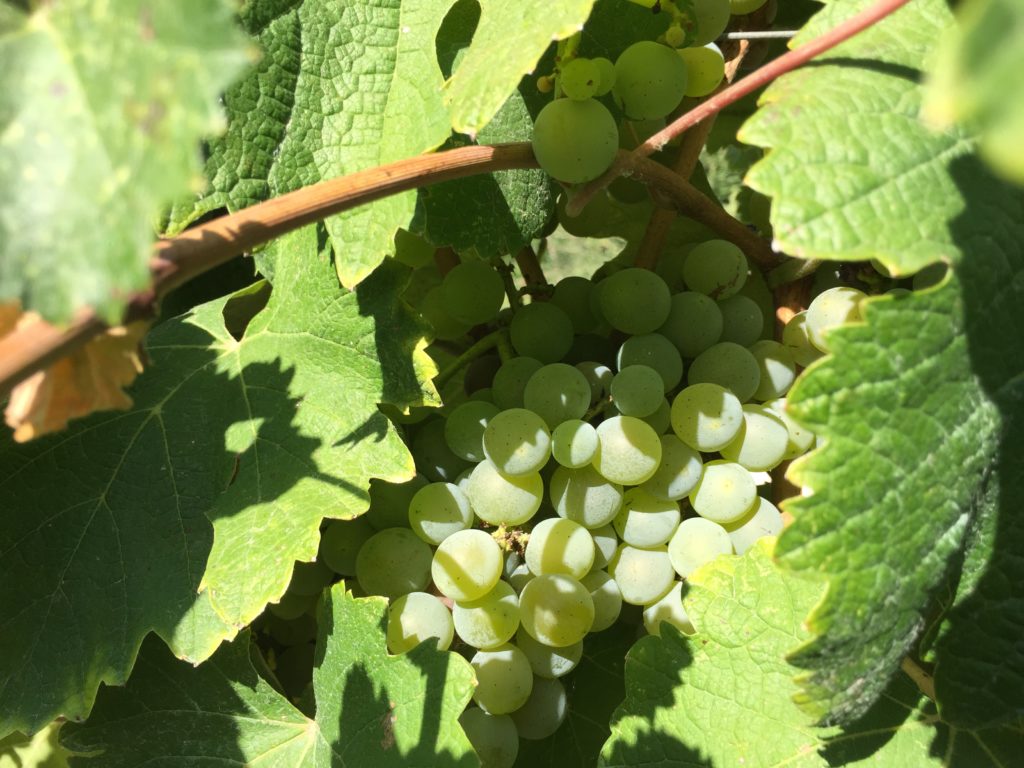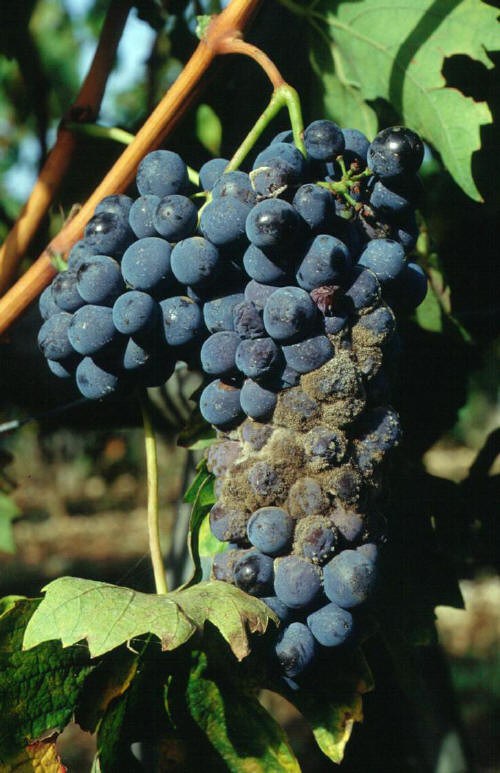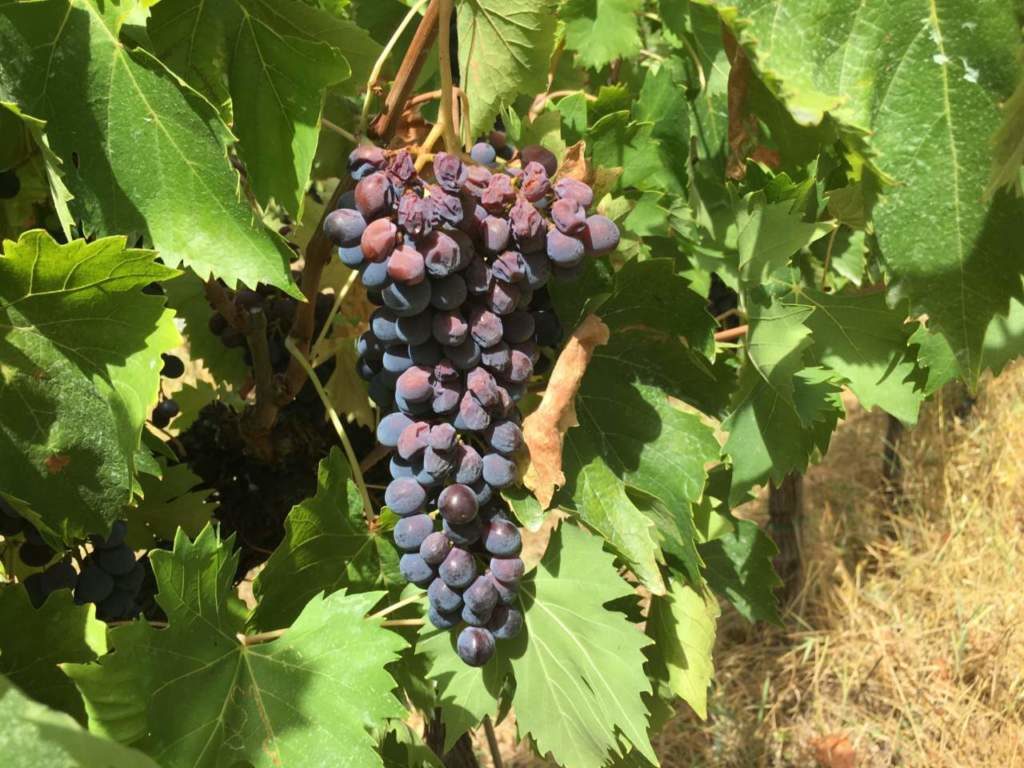In August we love the sea, the sun, and the tan. We can protect ourselves with a good sunscreen but grapes can’t, so they don’t like sunbathing or, better, the direct exposure to the torrid rays of the sun, which are particularly intense in our area.
In the very important period of ripening, we winemakers also evaluate the exposure of the bunch. We decide if the defoliation is necessary, that is the removing of some leaves around the bunch, or not.

In general, the grapes need to be a little covered by leaves, however it depends on the climate and each particular situation. Especially, in hot climates and with intense solar radiation such as in Bolgheri (and for a large part of the center and the south Italy), grapes could undergo serious problems, if too exposed.
The defoliation.

In the cooler and (above all) humid territories, defoliation in the last stages (from the veraison to few weeks before the harvest) is often necessary. Removing a little vegetation serves to avoid stagnation of humidity, micro-conditions that can favor the terrible rot and the mold of the bunch, with the consequent loss of the grapes. This need may also be present in our Mediterranean area, but only exceptionally, in particularly rainy vintages.
Normally, however, a balanced vine does not require defoliation. Scholars give us some parameters: the coverage is optimal up to about 40% -50% of the bunches surface.
However, if the vine is too lush and the excess of leaves completely covers the bunches, the defoliation can be favorable, especially in environments without intense sun radiation. In this case, the experimental tests showed that the lightening of the vegetation and the better exposure improve the maturation (favoring the increase of sugars, the increase of the color, there are more primary aromas, less acidity, a better accumulation of compounds phenolic).
If you decide that it is the case to remove the leaves, however, you must also understand how much to remove and how. So, it is a handiwork that should be done only by expert people, able to decide for each singular vine.
The leaves should not be chosen at random. It is better to remove the basal ones, which are under the bunch. They are the oldest but also those not directly involved in photosynthesis in favor of the ripening bunch. This role is instead played by the leaves above the fruit, which it would be better to eliminate as little as possible, except for those that are too shading.
In general, however, it is always better not to remove too many leaves, otherwise the plant’s photosynthetic capacity (therefore the quality of the grapes) is limited. How many leaves we need? It depends on many factors: the climate, the intensity of solar radiation, the variety (for example, it also affects the size of the bunch), the vine training system, …
The excess of light and heat.
In our territory, if the vines are in balance, as mentioned, we mostly avoid the defoliation: there are almost never any phytosanitary risks related to humidity, except in particular years. In particular, we want to avoid damage from excess of light and heat.
Numerous studies have shown that, in warm areas and with intense solar radiation, the optimal situation for ripening grapes is a microenvironment in which the bunch receives diffused light, with some flashes of light that infiltrate the vegetation from different directions.
In these climates, there is no fear of the scarce accumulation of the various grape components. On the contrary, there is a risk of too high sugar concentrations which lead to too high alcohol levels, inelegant aromas and poor color.
Excessive heat and drought, for grapes exposed directly to sunlight, can also lead to serious damages, as phenomena of dehydration of the berries, with the synthesis of unpleasant aromas, the degradation of some aromatic precursors, up to real “burns”, which cause browning and necrosis of the tissues of the fruit.

These serious damages occur more often to those bunches that have grown in diffused light and are suddenly exposed to sunlight. It can happen because of the vintner, who makes a mistake in managing the vine canopy, but also for unwanted events (for example the fall of the leaves due to pest attacks, etc.).
The problem is not only the direct light but also the temperature, which plays a relevant role in ripening, especially on color and aromas, and can become excessive for the bunches not sufficiently protected by the leaves. Studies have shown that summer temperatures of 35°-40° can inhibit the synthesis of anthocyanins (the color of red grapes) but also degrade the pigments that have already been produced. The high temperatures also seem to cause a degradation of the aromatic precursors (e.g. carotenoids), that is, those substances that are not aromatic in the grapes but will become aromatic in the course of winemaking. High temperature fluctuations between day and night, as happens in Bolgheri (especially in the hills), can also optimally balance certain excesses of daytime heat.
Only our continuous good work in the vineyard allows optimal ripening. There may be that few bunches can escape the protection of the leaves of an optimally managed canopy. We will take care not to collect it, with the selection during the harvest, as we do for every berry that is not exactly perfect.